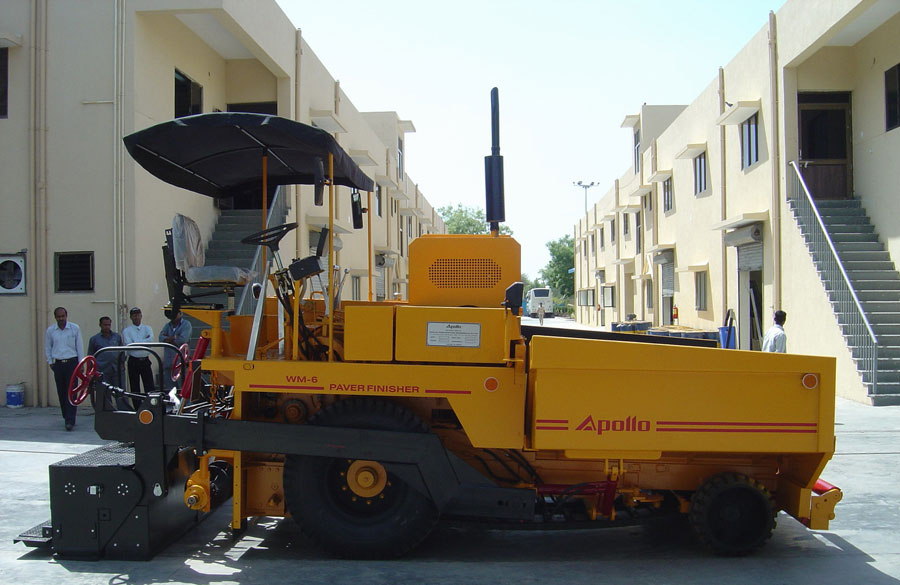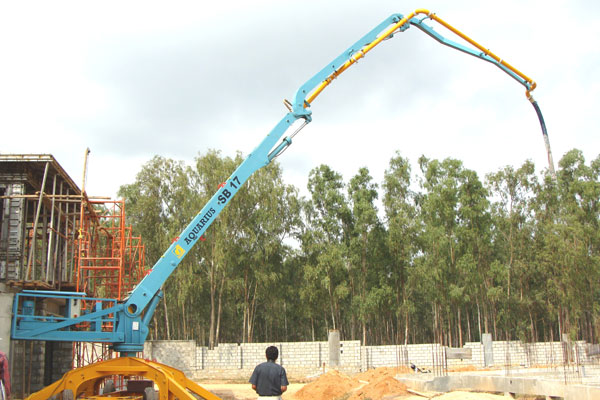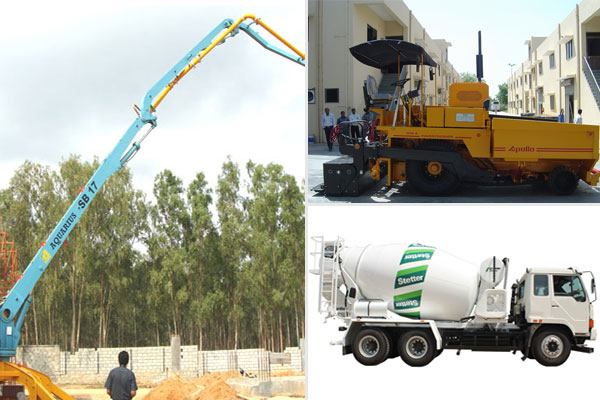In an earlier article, we have discussed different types of Concrete equipment for construction. This is a continuation of the same article, wherein we are discussed on various types of concrete equipment. Urbanization and infrastructure development in states have resulted in the rapid growth of the construction industry. This in turn has led to the ever-increasing demand for various types of concreting equipment. Concrete equipment is used for many applications, including basic foundations, superstructures, wastewater treatment facilities, water treatment facilities, parking structures, floor construction, and exterior surfaces.
Given below are different types of concrete equipment used in construction.
Concrete pavers
Modern age concrete paver machines come with built-in electrical or hydraulic vibrators that ensure homogeneous compaction of the concrete. The inset mold forms the concrete surface to the specified thickness and width while the slipform paver travels forward. Concrete pavers comprises electrical & hydraulic types. In addition, a dowel bar inserter can be added which inserts the dowel bars into the concrete as specified parallel to the paver’s direction of travel. Central tie bars or side tie bars can be inserted perpendicular to the road surface. The oscillating beam scrapes the surface across the roadway. Different versions of the auger conveyor are also available. Whether conveyor belt or auger – all of the settings such as conveyor speed, inclination angle, or position can be adjusted at the touch of a button. An additional transverse auger conveyor offers many benefits. Concrete pavers are now manufactured with a high tech mechanism with slab thickness which can be used in various applications including airport, runway, city roads, parking lots and many more.

Apollo WM 6 / RM 6
Manufacturers are now offering a novel independent IDBI attachment that allows dowel bar insertion behind a paver to form the transverse joint. The IDBI attachment is a new generation bar insertion system. The independent IDBI attachment features its own outriggers to aid in attaching the unit to the paver and also for loading and unloading the unit for transport. The outriggers can be hydraulically lowered and placed on the ground to support the full weight of the IDBI as it is attached to or detached from the paver.
Transit Mixer
Transit mixer is used for transporting concrete/ mortar or ready mix material from a concrete batching plant directly to the site where it is to be utilized. The transit mixer is loaded with dry material and water. The interior of the transit drum is fitted with a spiral blade. New generation transmit mixers are fully imported with an oil bath planetary gear system. In addition to the outer spirals have two opposed inner spirals. The outer spirals convey the mix materials towards the bottom of the drum while the opposed mixing spirals push the mix towards the feed opening.
Modern-day transit mixers are designed with special metallurgy of the drum which is designed for high degrees of wear resistance due to special alloying elements which make it more wear-resistant. There are additional features, such as precision of rpm control, noise levels and fuel consumption, and reduced maintenance costs, which are available in both electric and hydraulic versions of transit mixers. The modern-day machine’s special design also includes a transit drum with a spiral blade. Since this can move in multiple directions to ensure concrete material does not clot it is highly beneficial. This is low maintenance and highly efficient construction equipment.

There are two types of transit mixers, a truck-mounted in-transit mixer and a trailer concrete mixer. A Truck mounted in-transit mixer is a specially equipped concrete transport truck. The trailer concrete mixer is essentially a portable concrete mixer which is mounted for transportation. New generation transit mixers are designed and manufactured for transporting concrete mix from concrete batching plants to the construction site of canals, bridges, highways, dams, buildings, factory sheds etc.
Concrete Boom Placer
A concrete boom placer incorporates an articulating boom, capable of power operated slewing and luffing to place concrete by way of pumping through a pipeline attached to the forming part of, the boom of the plant. Concrete boom placers cover a range of horizontal and vertical reaches with placing booms. The new generation equipment range covers numerous applications starting with the small, versatile concrete pump and ending with the concrete pump that has the highest reach and best maneuverability. By combining modern design elements such as finite element analysis and structural optimization, modern Concrete Boom Placers have a more intelligent structure, lighter weight, and longer service life.

Functions such as full-hydraulic control technology are appropriate for the entire range of boom movements, featuring step-less regulation of boom operation. It employs a load-sensitive proportional control system with pressure compensation to easily change the running speed of booms. The user has complete speed control by regulating the angle of the control lever, and the boom is able to reach optimal operating performance. Moreover, it is equipped with local control, wired remote control and ultra long-distance remote control. Four frequency bands can be selected with a simple operation, allowing for both comfort and convenience.
Conclusion
The advances in technologies in concrete equipment have also been prompted by the need to enhance efficiency and reduction in environmental emissions, which impacted heavily on engine designs. New engineered machine designs have achieved much more performance and functions than would have been conceived a decade ago. With time there will be a further development of features in concrete equipment and manufacturers are willing to invest in R&D as they want more customized equipment. While choosing the concrete equipment be sure to discuss with experts about your needs and specifications.
Image Source: www.apollo-equipment.com, www.schwingstetterindia.com, www.aquariusengineers.biz


Comments are closed.